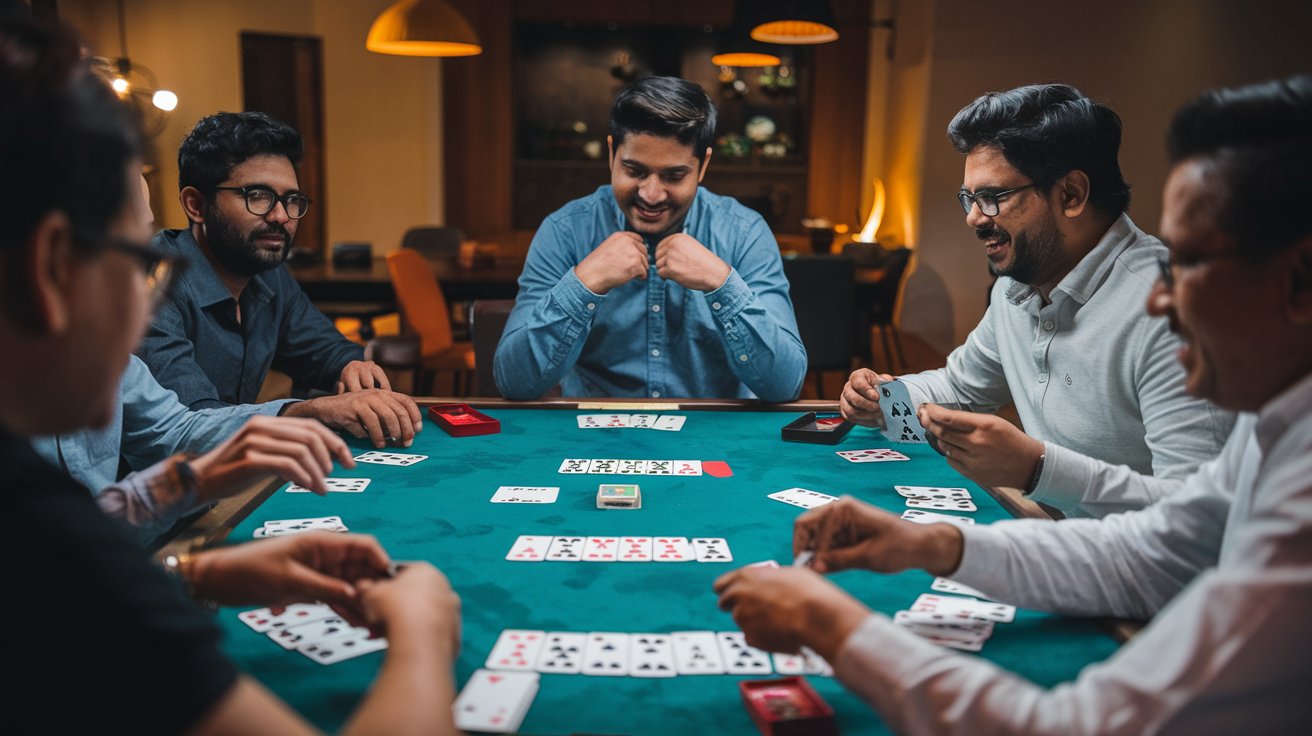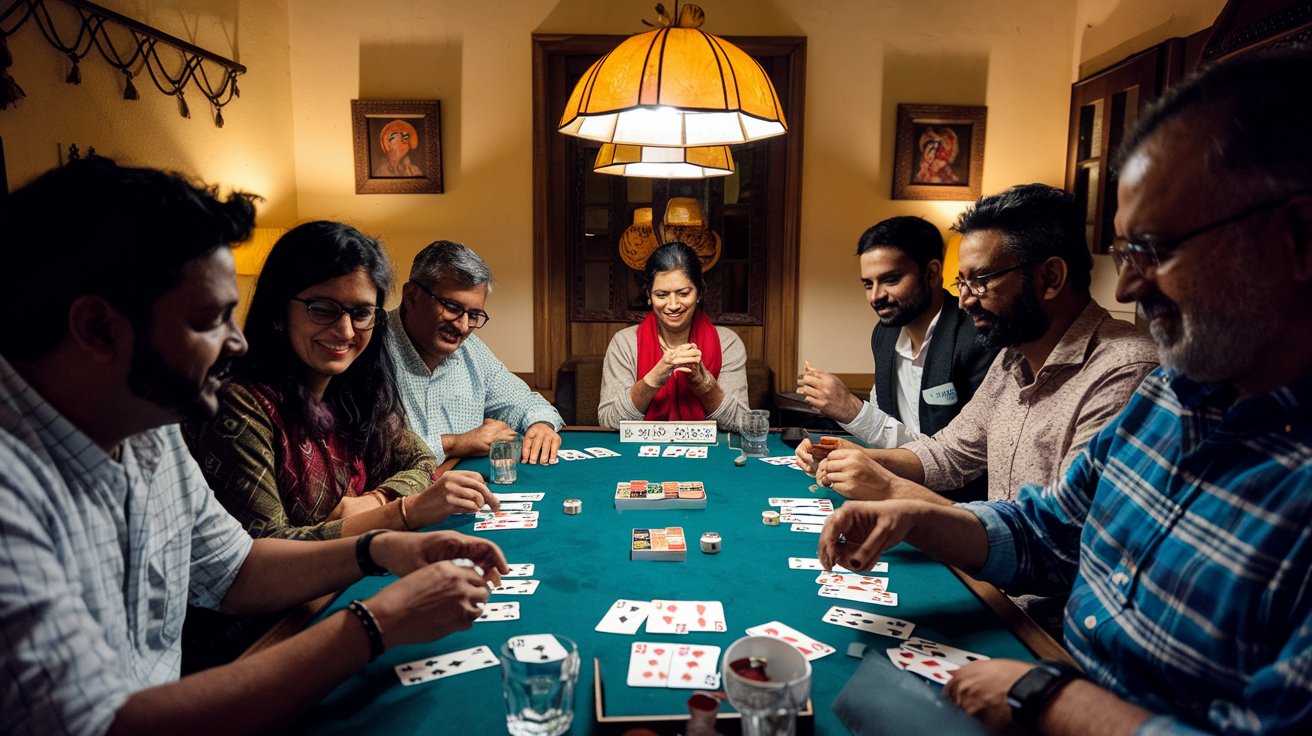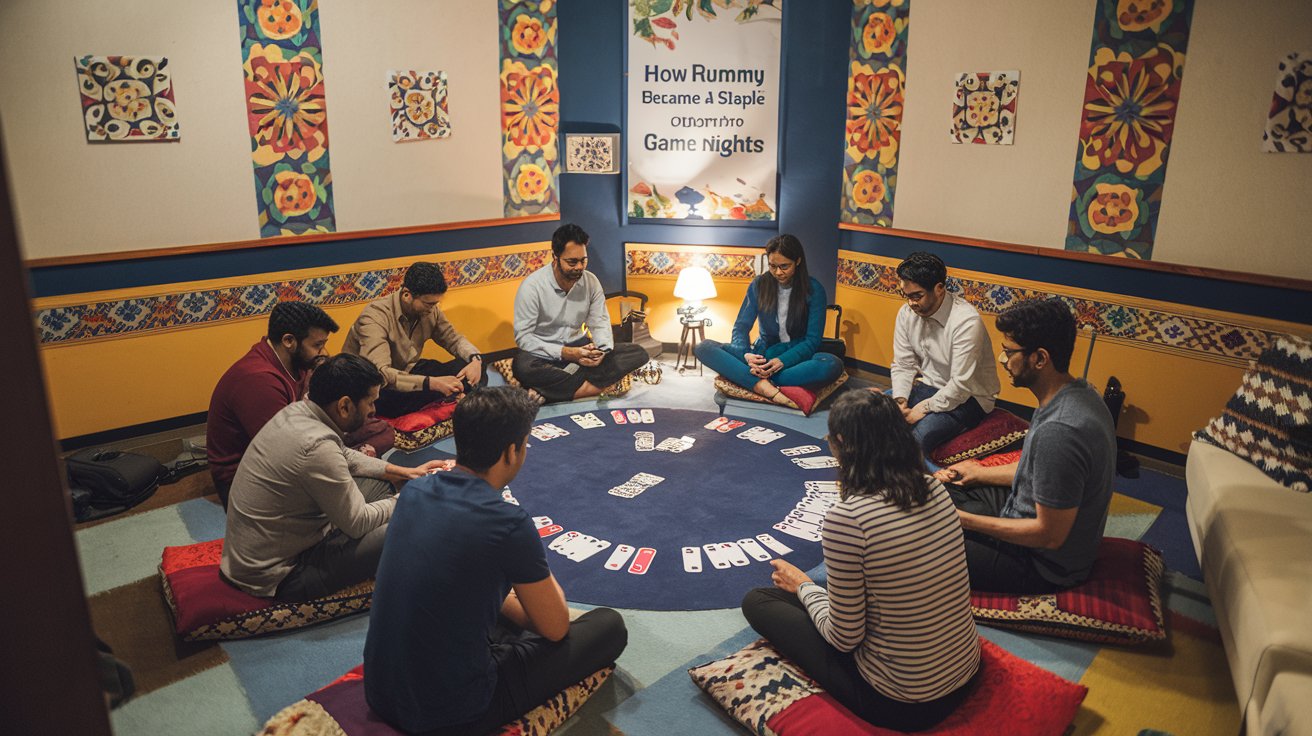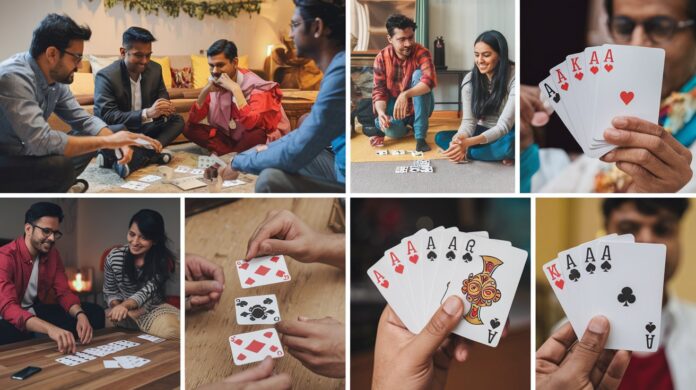In the tapestry of Indian culture—rich with vibrant festivals, diverse cuisines, and age-old traditions—there’s a humble card game that has quietly woven itself into the fabric of our lives: Rummy. From the narrow lanes of rural villages to the swanky living rooms of urban metros, Rummy has become a cornerstone of Indian game nights, transcending generations and geographies. But how did this simple game, played with a deck of 52 cards, rise to such prominence? Let’s dive into the fascinating journey of Rummy’s ascent, exploring its roots, its cultural resonance, and the reasons it remains a beloved fixture in Indian homes.
The Origins of Rummy: A Global Game Turned Desi
Rummy’s story begins far beyond India’s borders. Historians trace its roots to games like Conquian from Mexico or even Mahjong from China, with its modern form likely emerging in the 19th century. It’s believed that British colonizers brought card games to India, and Rummy—adaptable and easy to learn—found fertile ground here. What started as a foreign import quickly took on an Indian flavor, evolving into a game that felt as homegrown as chai or samosas.
Unlike other colonial legacies that faded with time, Rummy thrived because of its simplicity. All you needed was a deck of cards, a flat surface, and a few willing players—no fancy equipment or elaborate setups required. This accessibility made it a perfect fit for a country as diverse as India, where resources and leisure time varied widely. By the mid-20th century, Rummy had begun its quiet takeover of Indian game nights, one family at a time.
The Perfect Game Night Companion

What makes a game a staple in Indian households? It’s not just about rules or strategy—it’s about how it fits into the rhythm of our lives. Rummy checks all the right boxes. It’s social, engaging, and versatile, making it the ideal companion for a classic Indian game night.
Imagine a typical scene: the monsoon rains are pounding outside, the power’s out, and the family gathers around a lantern-lit table. Someone pulls out a deck of cards, and within minutes, the room is alive with laughter, debates, and the satisfying slap of cards hitting the table. Rummy’s ability to turn any moment into a shared experience is what cemented its place in our homes. Whether it’s a lazy Sunday evening, a festive Diwali night, or an impromptu gathering of cousins, Rummy has a knack for bringing people together.
Rummy and the Indian Family Dynamic
In India, game nights aren’t just about playing—they’re about bonding. Rummy thrives in this environment because it’s inherently social. Unlike solitary games or high-stakes gambling, Rummy strikes a balance: it’s competitive enough to keep players hooked, but lighthearted enough to keep the mood fun. It’s the kind of game where a grandmother can outsmart her tech-savvy grandson, or a shy cousin can emerge as the dark horse with a killer hand.
Take the story of Sanjay, a 40-year-old businessman from Mumbai. “Growing up, game nights were sacred in our house,” he recalls. “My dad would deal the cards, my mom would keep score, and my sister and I would argue over who cheated. Rummy wasn’t just a game—it was how we spent time together. Even now, when I visit my parents, we still play a few rounds—it’s like nothing’s changed.”
This intergenerational appeal is key to Rummy’s staying power. It’s a game that parents teach their kids, who then teach their own children, creating a cycle of tradition that feels uniquely Indian. The rules might be universal, but the banter, the house rules, and the quirky penalties (like making the loser dance or fetch snacks) are distinctly desi.
Festivals and Rummy: An Unbreakable Bond

If there’s one time of year when Rummy truly shines, it’s during Indian festivals—especially Diwali. Known as the festival of lights, Diwali has a long-standing association with card games, rooted in the belief that a little gambling brings good luck from Goddess Lakshmi. While some play with cash, for most families, Rummy is about fun and bragging rights.
“Every Diwali, after the puja and sweets, we’d clear the dining table for Rummy,” says Anjali, a 32-year-old teacher from Kolkata. “My uncles would bet peanuts or coins, but the real prize was being crowned the family champ. I still remember my aunt’s victory dance when she beat everyone with a perfect hand—it’s one of my happiest memories.”
Beyond Diwali, Rummy pops up during Holi, Raksha Bandhan, and even smaller celebrations like a cousin’s engagement. It’s the go-to activity when the formalities are done, and the family settles in for some quality time. This deep tie to festive traditions has made Rummy more than a game—it’s a ritual, a way to mark joyous occasions with laughter and connection.
The Social Glue of Rummy
In a country where community is everything, Rummy’s role as social glue cannot be overstated. It’s the game that turns strangers into friends and neighbors into rivals. Long train journeys, a hallmark of Indian life, often feature impromptu Rummy sessions in cramped compartments, where passengers bond over shared decks and snacks. Village chaupals—open-air gatherings—see elders playing under banyan trees, while urban apartment complexes host Rummy nights that rival any party.
The game’s flexibility helps too. It can be played with two people or ten, in quick 10-minute rounds or sprawling hours-long marathons. This adaptability ensures Rummy fits into any setting, from a cramped balcony to a sprawling courtyard. And let’s not forget the drama—accusations of cheating, last-minute comebacks, and triumphant declarations keep everyone on their toes, making every game a story worth retelling.
The Rise of House Rules and Regional Twists

Part of Rummy’s charm in India lies in its adaptability to local tastes. While the core rules—forming sets and sequences—remain constant, every family or region has its own spin. In some homes, jokers are wildcards that spark heated debates; in others, dropping out mid-game comes with a penalty like singing a song. In South India, you might hear of “Points Rummy,” a fast-paced version, while North Indian players might favor the leisurely “Deals Rummy.”
These house rules add a layer of personality to the game, making it feel personal and unique. “In our family, if you picked up too many cards from the discard pile, you had to do a dramatic ‘Sorry!’ with a bow,” laughs Priya, a 28-year-old from Chennai. “It made losing hilarious instead of frustrating.” These quirks, passed down through generations, turn Rummy into a living tradition, tailored to each household’s vibe.
Rummy Goes Digital: A Modern Staple
As India embraced the digital revolution, Rummy didn’t get left behind—it adapted. The rise of online Rummy platforms in the 2000s brought the game to smartphones and laptops, introducing it to a tech-savvy generation. Suddenly, you didn’t need a physical deck or a table full of relatives—you could play with friends across cities or strangers across continents.
Online Rummy retains the essence of the classic game while adding new layers of excitement. Features like leaderboards, tournaments, and cash prizes have made it a hit among millennials and Gen Z, who might otherwise have overlooked it for flashier digital entertainment. “I started playing online Rummy during the lockdown,” says Rohan, a 25-year-old student from Hyderabad. “It reminded me of my childhood, but the app made it so easy to jump in anytime.”
For the diaspora, online Rummy is a lifeline to home. Indians living abroad use it to reconnect with their roots, playing with family back in India via virtual tables. This digital evolution has ensured Rummy remains relevant, bridging the gap between nostalgia and modernity.
Why Rummy Endures in Indian Game Nights
So, why has Rummy become a staple in Indian game nights? It’s a perfect storm of accessibility, sociability, and cultural resonance. It’s a game that doesn’t demand much—just a deck and some enthusiasm—yet delivers hours of entertainment. It thrives on human connection, fitting seamlessly into India’s family-centric ethos. And it’s steeped in tradition, carrying the weight of memories from childhood game nights to festive showdowns.
Rummy’s ability to evolve—whether through regional twists or digital platforms—keeps it fresh while honoring its roots. It’s a game that’s as comfortable in a village hut as it is on a smartphone screen, a rare feat in a world where traditions often fade under the weight of progress.
How to Make Rummy Your Game Night Star
Ready to bring Rummy into your next game night? Here’s how to make it a hit:
- Keep It Casual: No need for high stakes—play for fun, with silly penalties for losers.
- Mix Generations: Invite kids, parents, and grandparents for a true Indian vibe.
- Add Snacks: Pair it with chai, pakoras, or mithai to set the mood.
- Create House Rules: Make it your own with quirky twists—maybe the winner gets to pick the next Bollywood song to play.
- Try Online: Host a virtual night if your crew’s spread out, blending old-school charm with new-age convenience.
Conclusion: Rummy’s Lasting Legacy
Rummy’s journey from a colonial import to a staple in Indian game nights is a testament to its universal appeal and adaptability. It’s more than a card game—it’s a bridge between past and present, a spark for laughter and rivalry, and a symbol of togetherness in a fast-changing world. Whether played with a tattered deck on a rainy night or tapped out on a sleek app, Rummy remains a constant in Indian homes, proving that some things are timeless.
So, the next time you gather for a game night, shuffle that deck and deal the cards. You’re not just playing Rummy—you’re keeping alive a tradition that’s been lighting up Indian nights for generations.

Zareb Saleh is a journalist at Gulf Today and a ghostwriter for Gameoholic, specializing in gaming, technology, and digital culture. With a keen eye for industry trends, he delivers insightful stories that engage and inform readers.




